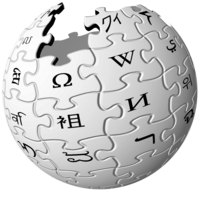 Wikipedia is one of the most powerful sites on the web, as we noted earlier this month. We found that Wikipedia pages appeared on the first page of Google results (the most dominant search engine in the world) for more than 50% of the most searched for web topics. But who is wielding all that power?
Wikipedia is one of the most powerful sites on the web, as we noted earlier this month. We found that Wikipedia pages appeared on the first page of Google results (the most dominant search engine in the world) for more than 50% of the most searched for web topics. But who is wielding all that power?
Because Wikipedia is open to edits from anyone, it means that anyone can influence one of the most influential sites on the web. That’s all at once empowering and potentially dangerous. Below are five sites that can help you keep tabs on Wikipedia.
Deletionpedia
A lot of attention is paid to the number of Wikipedia articles being added every month, but less is paid to the thousands of articles that are deleted. Some of these articles probably don’t have a place on the site — such as this rather useless list of Wikipedia article with the word ‘system’ in the title — but others might be more contentious and were only deleted after long, and often times heated debates.
Deletionpedia keeps archives of all the pages removed from Wikipedia and the cited reason for removal. Its archive has over 63,000 pages removed from the encyclopedia site. Ironically, there is a debate raging right now over whether to delete the Deletionpedia page from Wikipedia. Seriously.
Wikipedia Trust Project
The Wikipedia Trust Project from the University of California Santa Cruz scans articles at Wikipedia and color codes them based on a trust rating of the people who wrote the article. The way it works is by looking at editors of the Wikipedia article in question and assigning trust to each editor based on previous edits — more trust for those whose edits are often kept and less for those whose edits are often changed or reversed. The article is then color coded based on their contributions.
The project has a demo site up using a dump of the Wikipedia database from February 06, 2007, but the project page has more up-to-date version of WikiTrust source code available for download under and open source BSD license.
WikiScanner
WikiScanner, a project by Virgil Griffith at the California Institute of Technology, matches up Wikipedia edits with the organization where they originated by IP address. The idea is to search out and expose so-called “salacious edits,” in which companies, politicians, or others scrub their own articles.
Wikiscanner has received probably the most mainstream press coverage of any site in this round up, but unfortunately hasn’t updated its database since August 2007. A major overhaul of the site was promised for summer 2008, but so far it hasn’t materialized.
WikiDashboard
A project out of the famed Palo Alto Research Center, WikiDashboard is a Wikipedia browser that adds a stat bar that shows who is editing articles and how often. “The idea is that if we provide social transparency and enable attribution of work to individual workers in Wikipedia, then this will eventually result in increased credibility and trust in the page content, and therefore higher levels of trust in Wikipedia,” writes PARC’s Bongwon Suh and Ed Chi of the project.
The Augmented Social Congnition Research Group maintains an interesting blog that often includes insights learned via the Dashboard project.
 Josh Catone
Josh CatoneBefore joining Jilt, Josh Catone was the Executive Director of Editorial Projects at Mashable, the Lead Writer at ReadWriteWeb, Lead Blogger at SitePoint, and the Community Evangelist at DandyID. On the side, Josh enjoys managing his blog The Fluffington Post.



